Inmarsat Services are down in the Asia-Pacific region
It’s the morning of April 18, and if you are an Inmarsat customer in the Western Pacific Ocean area, you have likely been offline for just about 48 hours so far. No calls, no weather downloads, no emails, etc. Inmarsat has experienced a major outage of the geostationary satellite that services phone and data services in that region of the world. The cause of this outage appears to be some sort of software or hardware failure on the satellite itself which Inmarsat is still working to get around or solve as of this writing. This one satellite covers 1/3rd of the Earth for Inmarsat’s L-Band services. While this is a major issue for Inmarsat and their customers we can’t single out just Inmarsat.
Just 10 days ago, Elon Musk’s SpaceX Starlink network experienced a complete global outage, all users of Starlink were offline no matter their location, plan, or other options. And this wasn’t the first similar outage they have experienced in the last year or so. The cause of this latest issue is simply immaturity as a network operator, showing both lack of network management discipline as well as inherent single points of failure in their network design. These are things that a company like Inmarsat or Iridium would have learned 30 years ago, and that an experienced network engineer with proper tools and management directives would have caught ahead of time. But like all of Elon Musk’s companies, SpaceX is a “Go Fast and Break Things” type of business. This isn’t necessarily good or bad, it just is. But again, they aren’t the only ones.
About a year ago, I discovered a problem in Iridium’s network affecting handheld phone users that were downloading files (emails and weather) that both prevented successful downloads AND caused excessive consumption of billed minutes due to failed connection attempts and retries. I had to pay out of pocket for handheld satellite phone airtime to test and document the issue for to prove to Iridium that the problem existed and ultimately find the root cause, resulting in the replacement of one of Iridium’s core network switches. This problem existed for weeks before my customers reported issues to me, more than a week for me to show Iridium that there was an issue, and another month or more for Iridium to resolve it after that. This meant that sailors out on the sea, relying on standard Iridium phones to download files were unable to use that service reliably for a couple of months. It still kills me that seemingly no one else discovered this issue and pushed it up to Iridium AND that I had to pay for my own satellite airtime to help Iridium troubleshoot their own network issue affecting hundreds of thousands of their customers.
The one constant — there are pros and cons to each type of network, Cellular vs Satellite, wired vs wireless, LEO vs GEO, cross-link vs direct-to-ground, etc. No network is impervious to failure, they just have different types of failures and are operated by organizations with different levels of discipline. They will fail, it’s just a matter of when and how.
Network failures aren’t the only problem
Putting aside, for the moment, network issues that affect multiple customers, there are also issues that can occur with your hardware or onboard your boat.
Iridium Go! satellite hotspot units have been super popular due to their versatility and low price point, but the Go! unit won’t work without a battery installed, and if that battery fails due to age or fault, the Go! will not turn on even if it is plugged in to power.
Larger systems like Starlink, Intellian/Sailor VSAT systems, Iridium Certus, KVH, Viasat, Inmarsat Fleet, etc. rely on the vessel or vehicles power, DC battery bank in some cases, AC power (inverter/generator/etc.) in other cases. If the vehicle or vessel experiences an AC power failure for any reason (generator failure, inverter fault, water ingress, failure of charging sources, etc.) Starlink, VSAT, KVH, and Viasat systems won’t be powered on to use in the event you need to declare an emergency. Even if they were on, can you really rely on your smartphone and Wi-Fi calling,anywhere in the world, at the moment you need it? And rescue authorities will be confused when Starlink’s data connection shows you are in Montana while you tell them you are near Bermuda, and your phone reports it’s last cell tower connection in Florida.
Starlink hardware has proven somewhat unreliable in the field so far as well. The high-performance flat antenna which is used for the Maritime plans is rated IP56 water resistant which isn’t the best but should be good enough for maritime use. However, it’s clear from user experience that the cable connector on the antenna itself is allowing water ingress inside the antenna. We have seen several units failing due to being full of water. In addition, the actual connector Starlink uses for its cables is small and carrying more electrical current than similar connectors normally do. Customers have seen issues where the cable comes loose on its own and/or the electrical connectors become scorched due to poor connection causing the antenna to fail to power on. Starlink antennas have also simply failed for any number of random reasons. To be fair, Starlink is new and cool technology, and some growing pains are expected, but these things need to be considered when safety at sea is goal.
Lest we leave out radio, HF Single-Sideband is a tried-and-true direct communication option that is integrated into the global maritime distress system and many sailors and commercial vessels rely on. The benefit of HF radio is long-range communication, no reliance on any commercial infrastructure that that can be affected by natural disaster or human error, and global reach. However, HF radio transmissions areaffected by changes in the Ionosphere, which is in turn affected by the activity of the Sun. The ability to communicate at any particular HF frequency depends on the time of day and the relative activity of the sun. At times it could be nearly impossible to establish communications without waiting for propagation conditions to change.
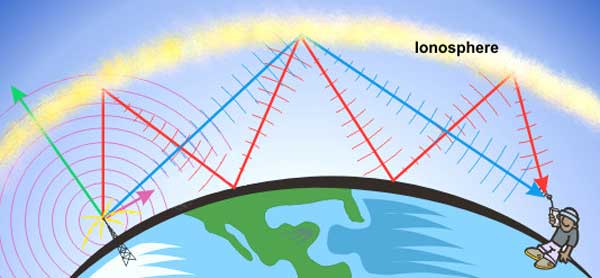
So, what does this all mean?
The obvious conclusion here is that no one solution is perfectly reliable and if you are putting yourself into situations where the ability to communicate in some way has life-safety consequences or financial consequences, you need a backup. And not just any backup, but a backup that has a different design vs your primary. You need a backup that doesn’t rely on the same commercial infrastructure as your main communications option, and a backup that gives you at least your minimum requirements (whether safety, personal, business, etc.).
Examples of solutions that use the same infrastructure…
Iridium-Based Services: Iridium Go, Garmin inReach, Zoleo, Bivy Stick, Iridium Certus — While satellite messengers, satellite phones, and Iridium Certus data services use different technology, they all rely on the same Iridium satellites, cross-links, and ground stations. If Iridium were to experience a major network outage for some reason, they could all be affected simultaneously. Iridium has, in practice, been quite reliable for 30 some odd years, a testament to their network discipline, but things do happen.
Inmarsat L-Band services: IsatPhone (aka GSPS), Fleet One, BGAN, Fleet Broadband are all variations of Inmarsat’s L-Band services and are all affected by this week’s Asia-Pac satellite outage. The nature of geo-stationary satellite services, where huge portions of the earth are served by a single satellite means that an issue with one component on one satellite affects an entire region of the world all at once. Note that commercial flight monitoring and telemetry services use the same services. Note that because each satellite is independent, the Americas and Europe services are not impacted one benefit of a less integrated network vs. Iridium and Starlink.
Dual Terminal/Antenna Solutions: Common with Starlink Maritime and VSAT-based systems, installing two or more antennas for the same service can solve issues related to vessel obstructions, hardware failures, and performance limitations, however all antennas are typically relying on the same network provider. In the VSAT world, each satellite is mostly independent, with respect to ground stations and other infrastructure, but there are still scenarios that can cause an outage for an entire vessel or multiple antennas, such as human error, or failure of the ground network that routes data between ground stations and to/from the Internet. With the Starlink outage on April 8 ALL terminals globally were affected. Having two or ten antennas wouldn’t have helped.
The highly integrated nature of Starlink’s fledgling laser-cross-linked, LEO constellation means that one stupid mistake can take down the entire global network all at once.
So how do we ensure redundancy?
The key to ensuring that a backup solution is performing it’s intended function is to evaluate the following…
- Does the backup solution offer coverage for my entire intended cruising route?
- Does the backup solution rely on a different network or infrastructure compared to my primary solution?
- Does the backup solution allow you to do what you need to when the primary is offline.
Example scenarios
 Yacht Guest Services?
Yacht Guest Services?
Let’s assume you are a super yacht and you have paying guests who expect superior service as well as Netflix and general Internet connectivity. While Starlink may be excellent at providing this, what happens if Starlink is down, or if Netflix thinks your boat is in France due to Starlink’s network routing when in fact the boat is in Spain, and the Netflix content restrictions apply. Well, a backup VSAT system can provide the bandwidth for the guests use, while operating on a completely different infrastructure. With Starlink and VSAT you can avoid poor reviews, lost revenue, lower tips, etc.
Remote Business operations?
Maybe you are an entrepreneur or other principle in your business, and you need to be able to communicate with your office as opportunities or problems arise back home to help direct resources or solve issues. You have a VSAT (KVH, Aura, Viasat, etc.) or Starlink as your primary connection. If that’s down, you can’t even make a call or send an email. Using an Iridium or Inmarsat solution such as Certus or Fleet One/Broadband as a backup will allow you to make a sat phone call, download and upload files, send/receive emails, and more. It’s slower than the primary, limiting the more recreational uses of the higher speed solution but still gets you the minimum you need to ensure you can be reached when needed.
Basic Weather and Emergency Comms
I could write a whole other post on why Starlink should not be your only solution for emergency comms and critical data such as weather forecasts. From corporate immaturity, technical growing pains, and the ever-present terms of service issues to power requirements, lack of any built-in voice calling service, no integration with GMDSS, and not being portable for use off the vessel (such as in a life raft), Starlink is not (currently) a reliable solution for those that need reliable safety communications at sea.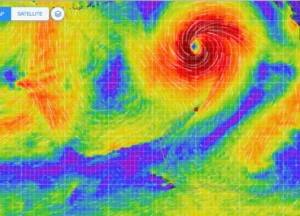
Whether you’ve decided to roll the dice on the Roam plan for your boat while the terms of service are still unenforced, or you have opted for the more robust and higher cost Maritime Commercial or Premium service, you really need to consider a backup for emergency calls, weather downloads, and basic safety communications. Even if you’ve opted for something like Iridium Certus or Inmarsat Fleet One as your primary instead of Starlink, you should consider some sort of backup of alternate technology. That alternative could be the old cruiser staple Iridium Go!, the new Go! Exec, an Inmarsat handset, an inReach, or even HF SSB, you really need some alternative to the primary.
Safety comms applies to the other category of boaters above as well. If the superyacht or cruising yacht connection is down, they can’t get weather data either, so they can’t plan upcoming anchorages and passages with safety of crew, guests, and the vessel in mind.
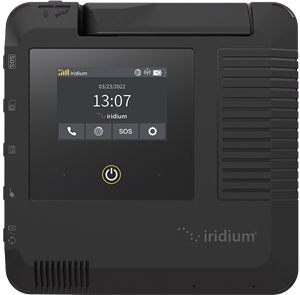 Even worse if the outage occurs while the vessel is already out on a long passage such as one boat I am tracking this week which is 1000km from the Marquesas’ and their only communications solution is a now water-damaged Iridium Go!. Vessel tracking, weather, sms, voice calling, even SOS are now completely down. This begs the question of why the Go! got wet in the first place — did they have a fixed install kit so the Go! could be mounted below decks and protected while in use? I don’t know. But a 3000-mile passage that lasts for weeks with no alternate ports is a serious case for a backup communications solution of some kind.
Even worse if the outage occurs while the vessel is already out on a long passage such as one boat I am tracking this week which is 1000km from the Marquesas’ and their only communications solution is a now water-damaged Iridium Go!. Vessel tracking, weather, sms, voice calling, even SOS are now completely down. This begs the question of why the Go! got wet in the first place — did they have a fixed install kit so the Go! could be mounted below decks and protected while in use? I don’t know. But a 3000-mile passage that lasts for weeks with no alternate ports is a serious case for a backup communications solution of some kind.
Wrap up
There are other reasons to consider a backup to a large satellite system such as Starlink, KVH, etc. — power consumption. If you are on a long passage, and you are on a power budget, an Iridium or Fleet One solution will use far less power than Starlink, and these options are certified and designed for use in horrible weather and sea conditions and while underway.
For those with Starlink, practically any maritime satellite option would make a good backup. Fleet One, Go! Exec, and Iridium Certus could allow access to your favorite apps, weather, email, and calls when the Starlink is offline. And if you just don’t want to keep the Starlin powered up all the time you can fall back to your basic comms any time you don’t need the higher speed of the Starlink solution.
For those with Fleet One as a primary solution, consider a handheld Iridium phone or Go!/Go! Exec as a backup, especially since it can be used in a ditch bag and life raft and taken ashore. For those with Iridium Certus, you may want to look at either a different Iridium device (Handset or legacy Go!) or maybe even an Inmarsat handheld or Fleet One as a backup.
If you are on a budget and your primary connection is an Iridium Go! or handset or Go! Exec already, you may want to explore an HF SSB for backup communications. HF SSB, especially when paired with a Pactor modem, is a versatile communications solution that can be used to hail other vessels, send an automated distress call that reaches hundreds or thousands of miles, download weather GRIB files and emails, and decode Weatherfax images. All while being a fun way to communicate with other cruisers in your region. Plus, once installed, an HF SSB solution has minimal to no ongoing costs.
Lastly… Always carry an EPIRB on board, preferably one that auto-deploys from the vessel when underwater. It is a once a decade purchase that provides insurance for when the $%^$ hits the fan, there’s at least one more way you can request help, and if you can’t get to it in time, a Category I (auto-deploying) EPIRB will call for help on its own.
Looking for accessories and networking solutions for Starlink and other products? Sea-Tech Systems has a whole suite of Starlink accessories and value add solutions; check them out here!

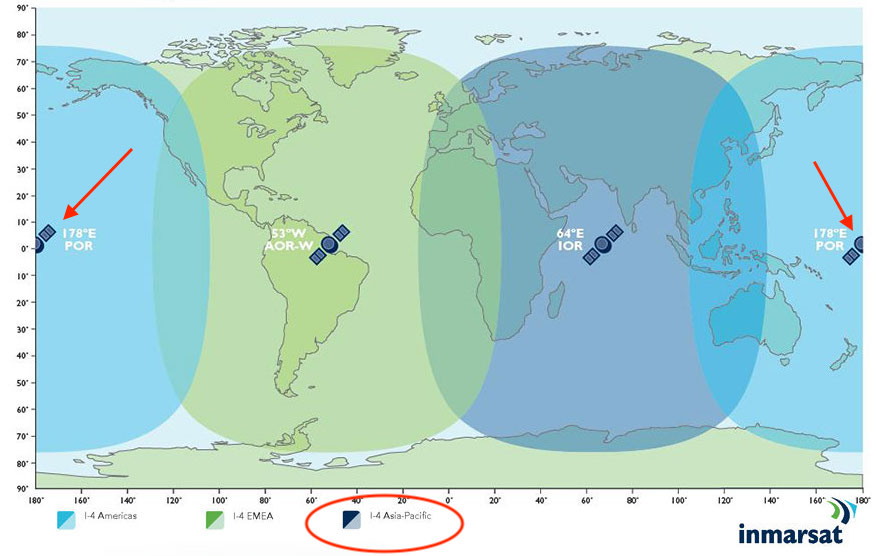
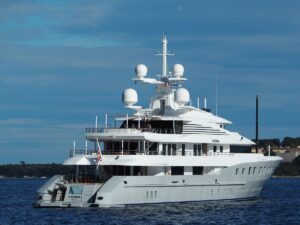 Yacht Guest Services?
Yacht Guest Services?